Research on Stability Control Method of Electro-Mechanical Actuator under the Influence of Lateral Force
Abstract
:1. Introduction
2. Modeling and Simulation of EMA
2.1. Multistage EMA Motor Model Based on JMAG
2.2. Three-Stage EMA Mechanical Connection Model
2.3. Model of ADRC
2.3.1. Improved Extended State Observer
2.3.2. Design of ADRC for Multi-Stage EMA
- 1.
- Design of ADRC for speed loop
- 2.
- Design of ADRC for position loop
2.4. Dynamic Model Based on ADAMS
3. Co-Simulation and Analysis
3.1. Simulation of Stability Control Affected by Impact Lateral Force
3.2. Simulation of Stability Control under the Influence of Periodic Lateral Force
4. Experimental Study on EMA Stability Control under the Influence of Lateral Force
4.1. EMA Servo System and Loading System
4.2. EMA System Experiment
4.2.1. Step Command
4.2.2. Sinusoidal Command
4.2.3. Random Lateral Force
5. Conclusions
Author Contributions
Funding
Data Availability Statement
Conflicts of Interest
References
- Tian, G.; Xie, J.; Chen, Y. Research on optimal time trajectory planning of large missile erection process. Comput. Simul. 2012, 29, 41–44. [Google Scholar]
- Zhang, C. Research on rapid erection system based on accumulator auxiliary power source. J. Beijing Inst. Technol. 2018, 38, 44–48. [Google Scholar]
- Wang, X.; Wang, S.; Duan, J.; Guna, Q. Design and research of load simulation system for erecting device of missile launching vehicle. Mach. Build. Autom. 2019, 48, 190–192. [Google Scholar]
- Ordoñez, N.A.; Rodriguez, C.F. Real-time dynamic control of a stewart platform. Appl. Mech. Mater. 2013, 390, 398–402. [Google Scholar] [CrossRef]
- Wu, X.; Bi, S.; Zhu, Z.; Wu, W. Adaptive sliding mode control for missile guidance law. In Proceedings of the 33rd Chinese Control Conference, Nanjing, China, 28–30 July 2014; pp. 960–965. [Google Scholar] [CrossRef]
- Colgren, R.; Frye, M. The design and integration of electromechanical actuators within the U-2S aircraft. In Proceedings of the Guidance, Navigation, and Control Conference and Exhibit, Boston, MA, USA, 10–12 August 1998; p. 4406. [Google Scholar]
- Qiao, G.; Liu, G.; Shi, Z.; Wang, Y.; Ma, S.; Lim, T.C. A review of electromechanical actuators for More/All Electric aircraft systems. Proc. Inst. Mech. Eng. Part C J. Mech. Eng. Sci. 2018, 232, 4128–4151. [Google Scholar] [CrossRef] [Green Version]
- Janker, P.; Claeyssen, F.; Grohmann, B.; Christmann, M.; Lorkowski, T.; LeLetty, R.; Sosniki, O.; Pages, A. New actuators for aircraft and space applications. In Proceedings of the 11th International Conference on New Actuators, Bremen, Germany, 9–11 June 2008. [Google Scholar]
- Qian, X.; Sigmund, O. Topological design of electromechanical actuators with robustness toward over-and under-etching. Comput. Methods Appl. Mech. Eng. 2013, 253, 237–251. [Google Scholar] [CrossRef]
- Albright, J.; Moore, L. Development and implementation of electromechanical actuators for the X-38 atmospheric test vehicles. In Proceedings of the AIAA Atmospheric Flight Mechanics Conference and Exhibit, Honolulu, HI, USA, 18–21 August 2008; p. 6569. [Google Scholar]
- Brandenburg, G.; Bruckl, S.; Dormann, J.; Heinzl, J.; Schmidt, C. Comparative investigation of rotary and linear motor feed drive systems for high precision machine tools. In Proceedings of the 6th International Workshop on Advanced Motion Control, Nagoya, Japan, 30 March–1 April 2000; pp. 384–389. [Google Scholar]
- Cowan, J.; Myers, W. Design and test of a high power electromechanical actuator for thrust vector control. In Proceedings of the 28th Joint Propulsion Conference and Exhibit, Nashville, TN, USA, 6–8 July 1992; p. 3851. [Google Scholar]
- Williams, K.; Brown, D. Electrically powered actuator design (EPAD). NASA/USAF/Navy 1997, 3, 97–104. [Google Scholar]
- Huang, Y.; Xue, W. Active disturbance rejection control: Methodology and theoretical analysis. ISA Trans. 2014, 53, 963–976. [Google Scholar] [CrossRef] [PubMed]
- Han, J. Active Disturbance Rejection Control Technology: Uncertainty Estimation Compensation Control Technology; National Defense Industry Press: Beijing, China, 2008. [Google Scholar]
- Yang, J.; Li, Y.; Wang, F.; Diao, C. Design of nonlinear tracking controller for flap electromechanical actuator. Comput. Simul. 2015, 32, 100–105. [Google Scholar]
- Kang, C.; Peicheng, C.; Shao, Y.; Wang, B. ADRC-Based Speed Control for Permanent Magnet Synchronous Machine Drives Using Sliding-Mode Extended State Observer. In Proceedings of the 2019 22nd International Conference on Electrical Machines and Systems (ICEMS), Harbin, China, 11–14 August 2019; pp. 1–4. [Google Scholar]
- Lu, W.; Li, Q.; Lu, K.; Lu, Y.; Guo, L.; Yan, W.; Xu, F. Load adaptive PMSM drive system based on an improved ADRC for manipulator joint. IEEE Access 2021, 9, 33369–33384. [Google Scholar] [CrossRef]
- Tian, G.; Xie, J.; Chen, Y.; Chen, X. Research on trajectory planning and tracking control of missile erection process. J. Syst. Simul. 2012, 24, 2356–2361+2371. [Google Scholar] [CrossRef]
- Li, Z.; An, J.; Wan, X. Analysis of ground wind load response characteristics of launch vehicle. Adv. Aeronaut. Sci. Eng. 2013, 4, 199–203. [Google Scholar]
- Wei, X.; Jiang, Y.; Zeng, W.; Pan, X. The coupling effects of the missile launcher and the ground in vehicle-mounted missile erecting. Adv. Mech. Eng. 2016, 8, 1687814016656106. [Google Scholar] [CrossRef] [Green Version]
- Yang, Z.; Yue, R.; Xu, Z. Wind load response analysis of large missile launcher. Mod. Def. Technol. 2015, 43, 218–222. [Google Scholar]
- Feng, S.; Meng, X.; Li, G. The Superior Election of Antiaircraft Missile Firing Mode Based on Advanced ADC. Guid. Fuze 2006. [Google Scholar]
- Li, X.; Liu, G.; Song, C.; Fu, X.; Ma, S.; Wang, Q. Rigid body dynamics modeling and analysis of multistage planetary roller lead screw. J. Northwestern Polytech. Univ. 2020, 38, 1001–1009. [Google Scholar] [CrossRef]
- Ma, S.; Liu, G.; Fu, X.; Zhang, W.; Qiao, G. Roller bearing distribution of planetary roller screw pair considering error. J. Harbin Inst. Technol. 2015, 47, 98–102. [Google Scholar]





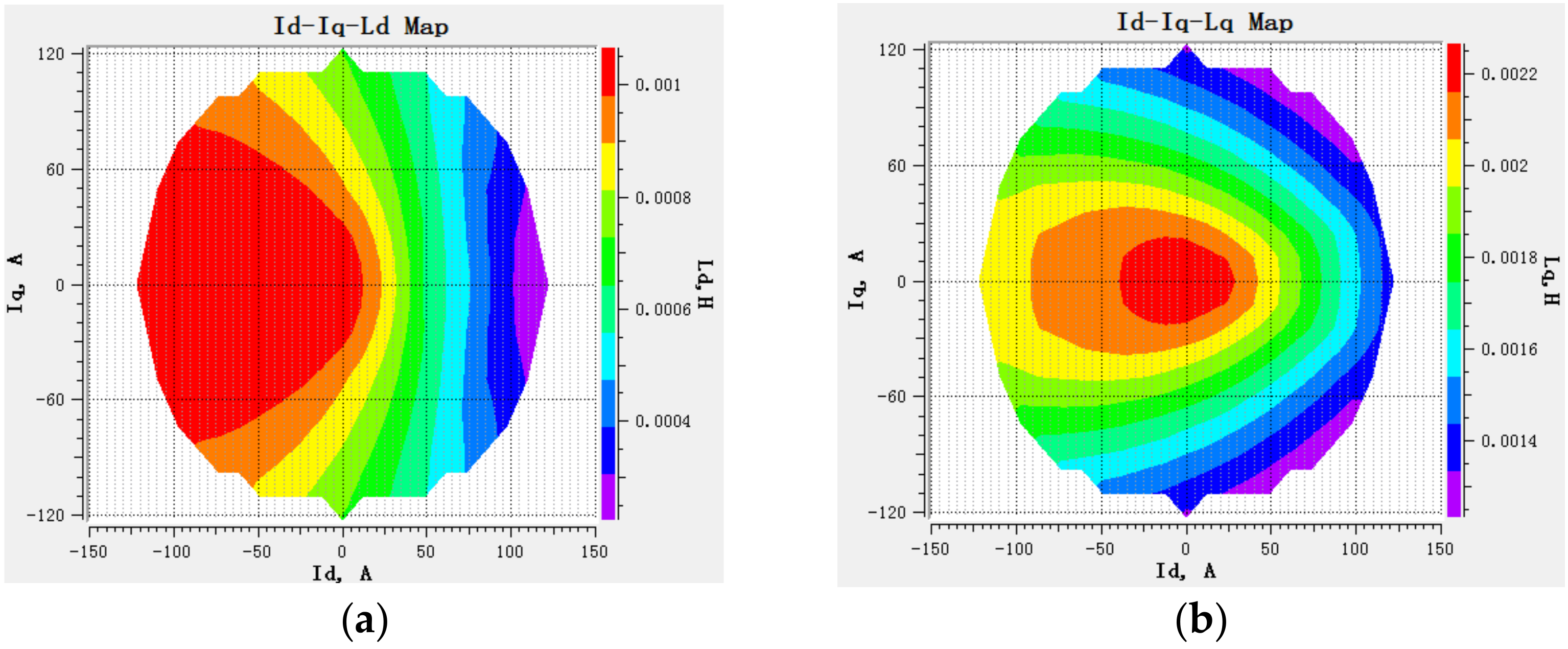


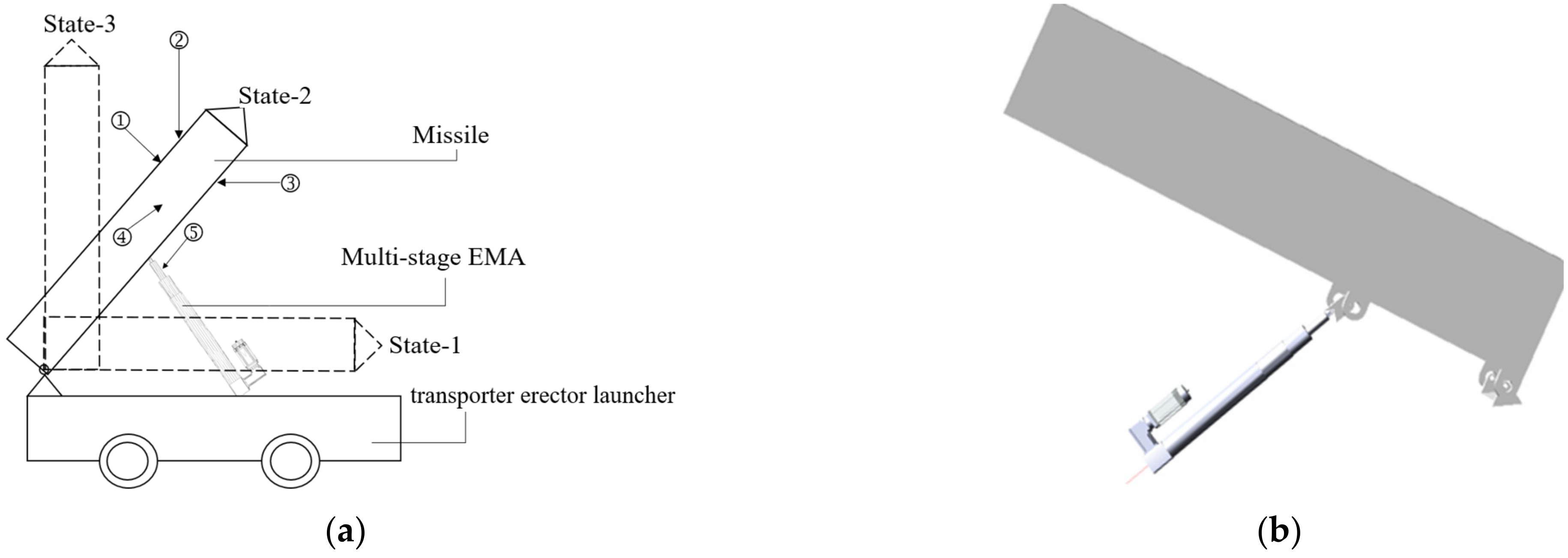
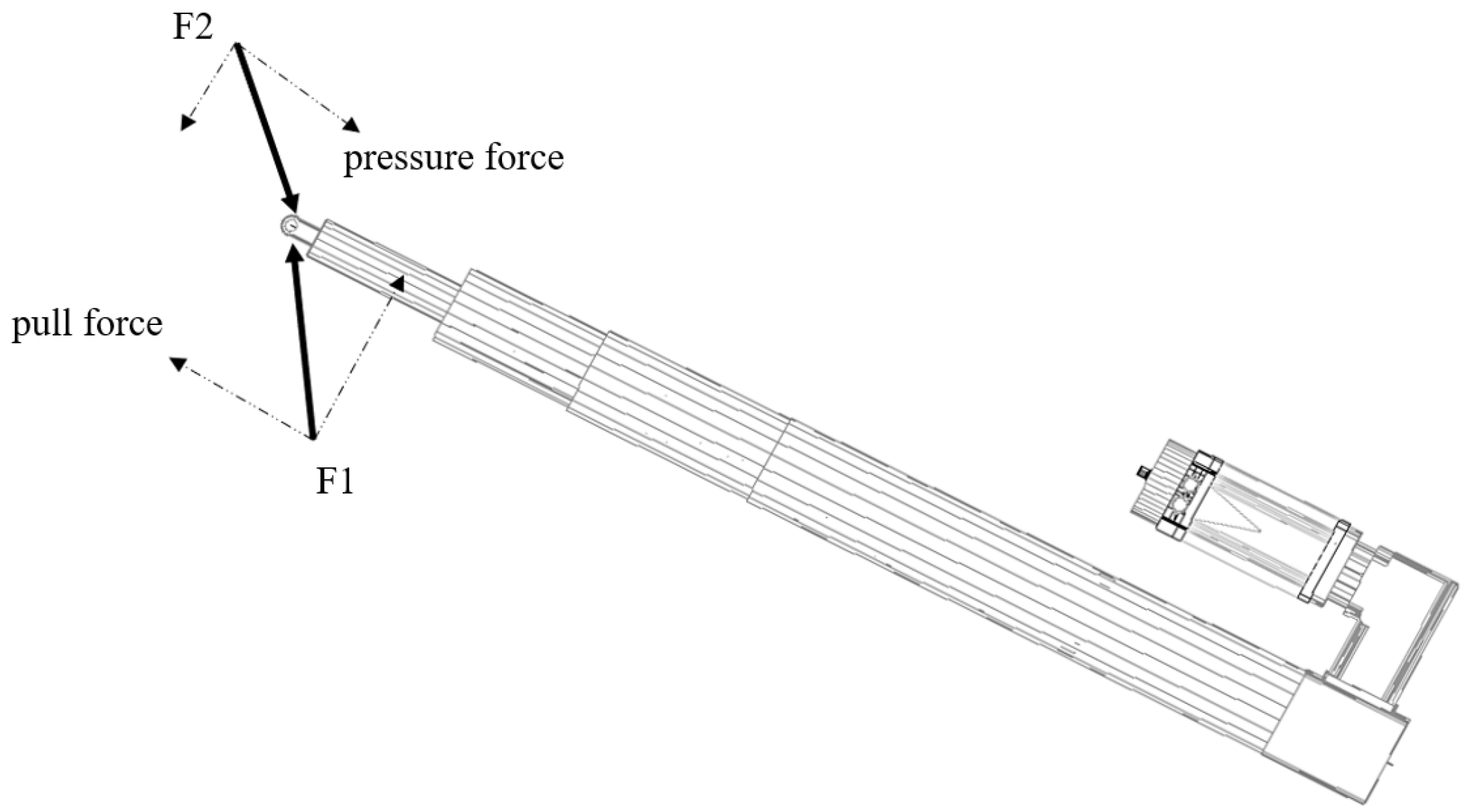

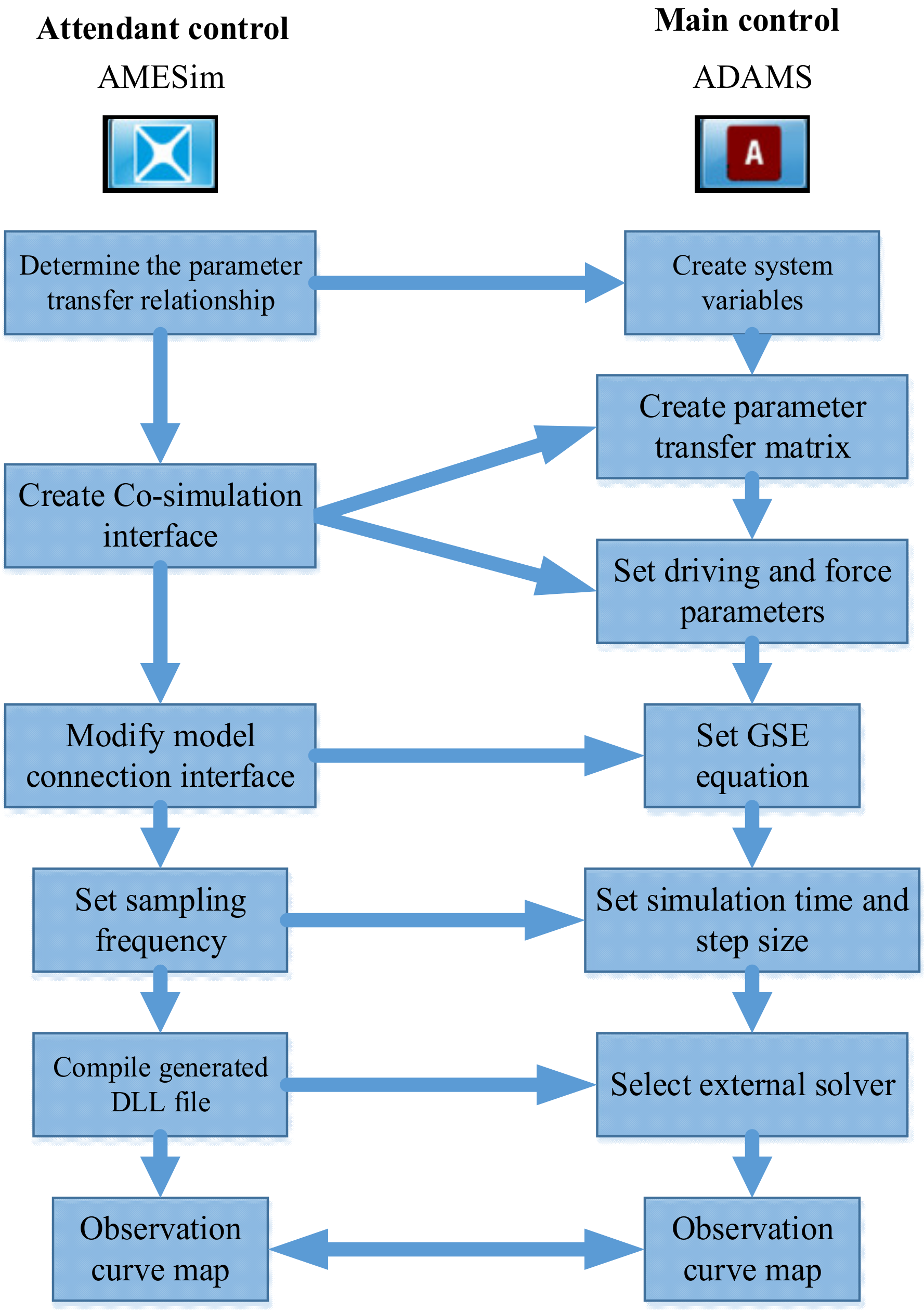
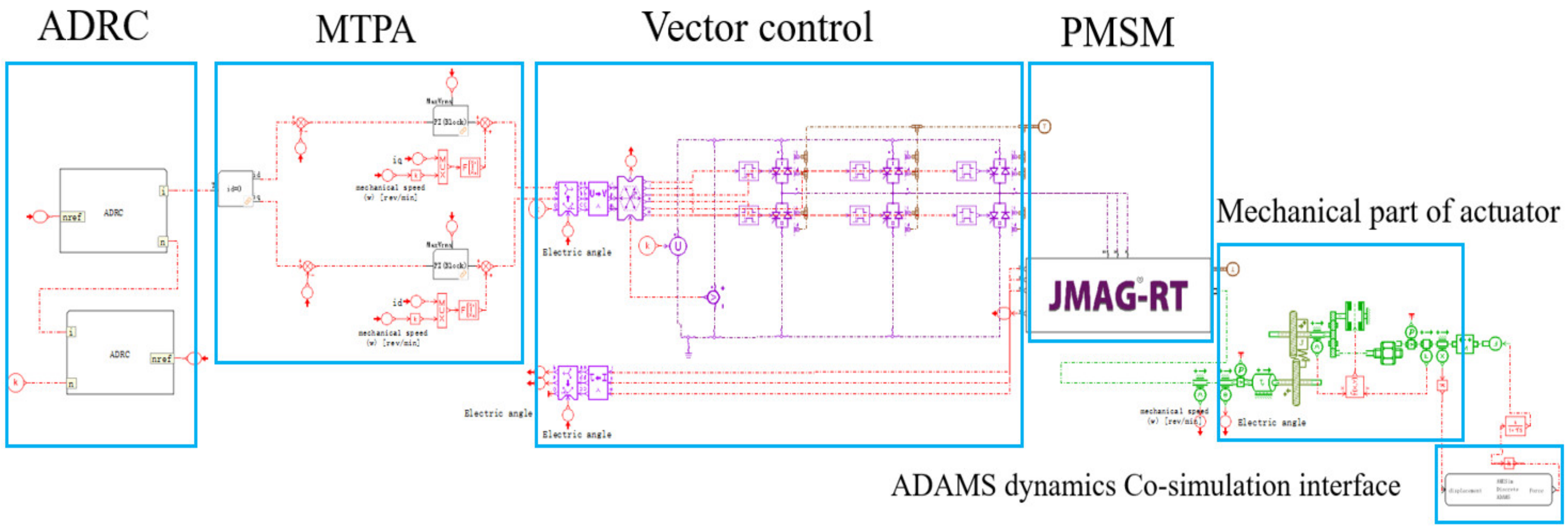
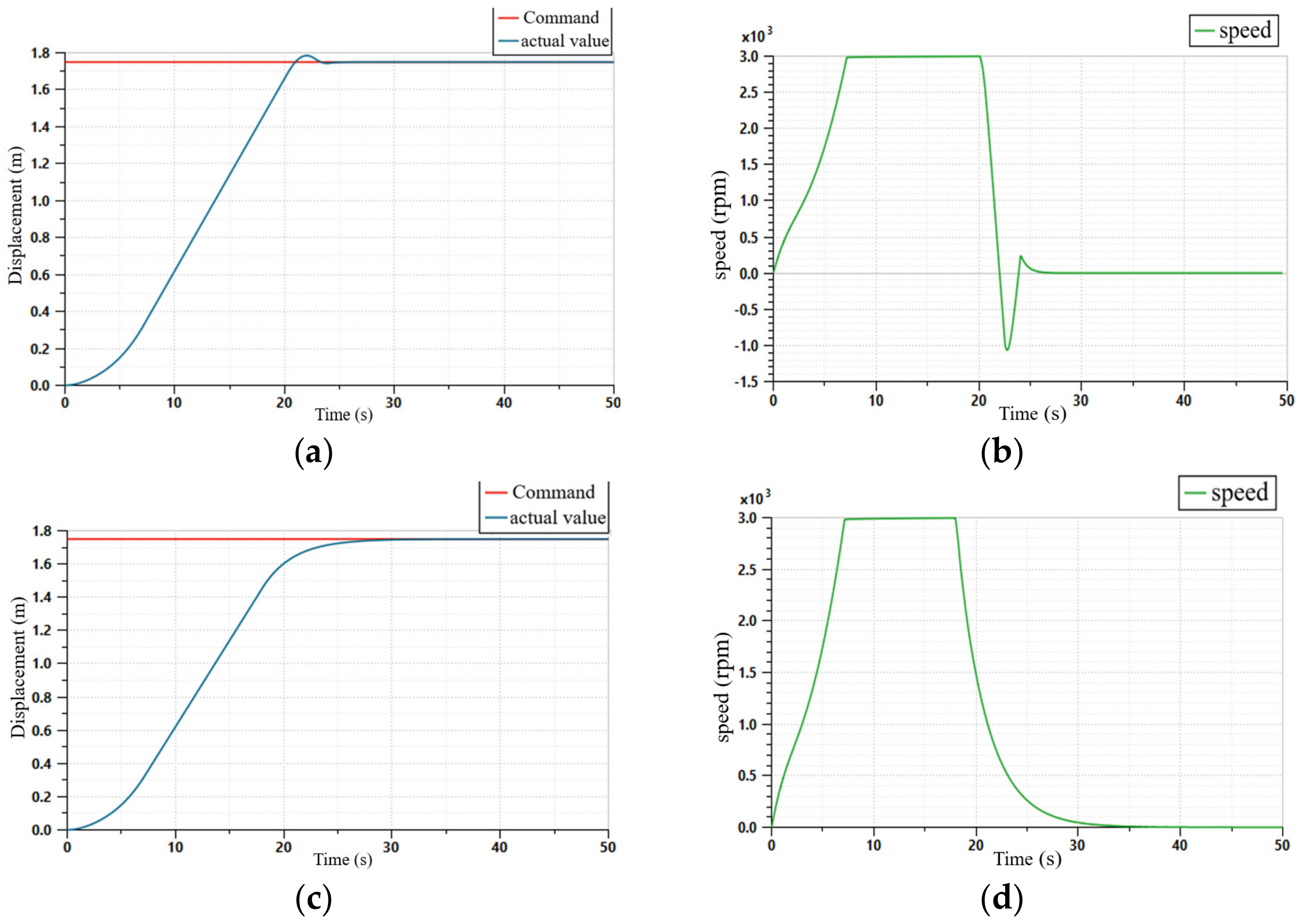
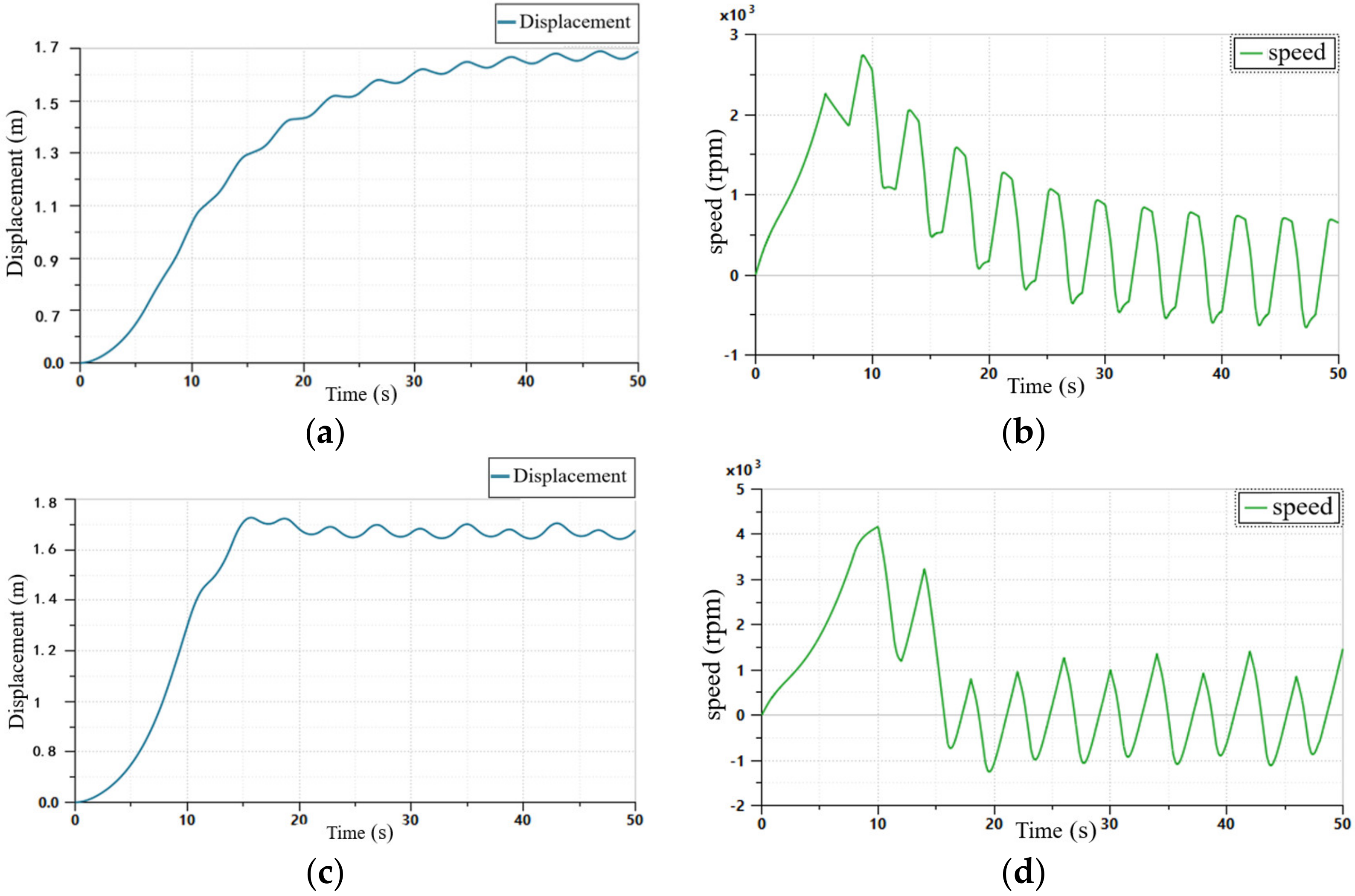
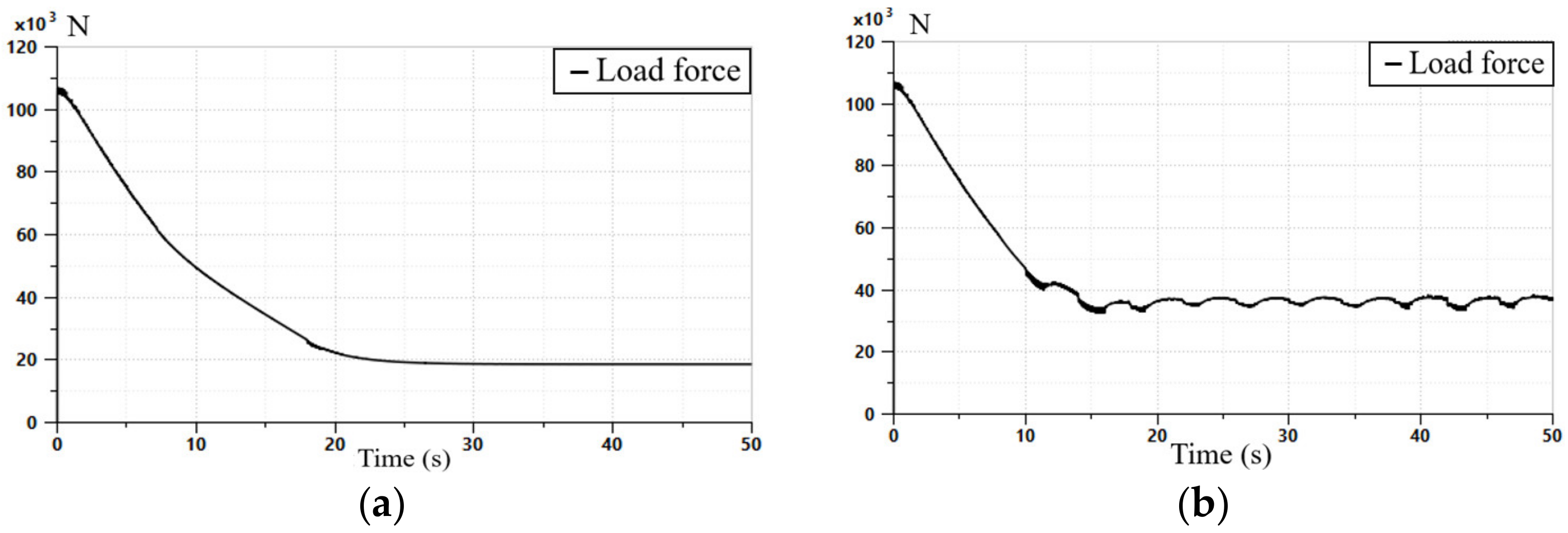
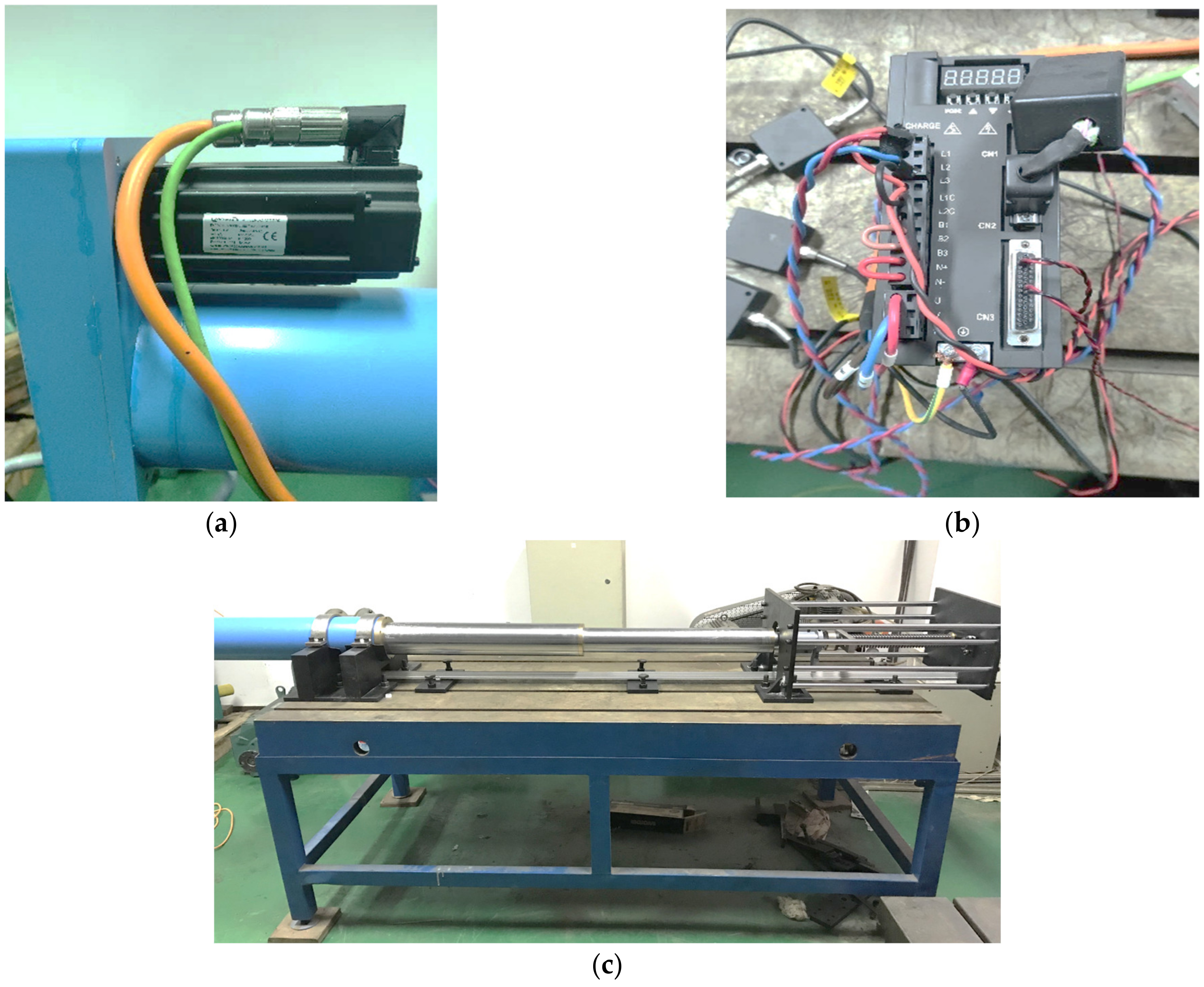
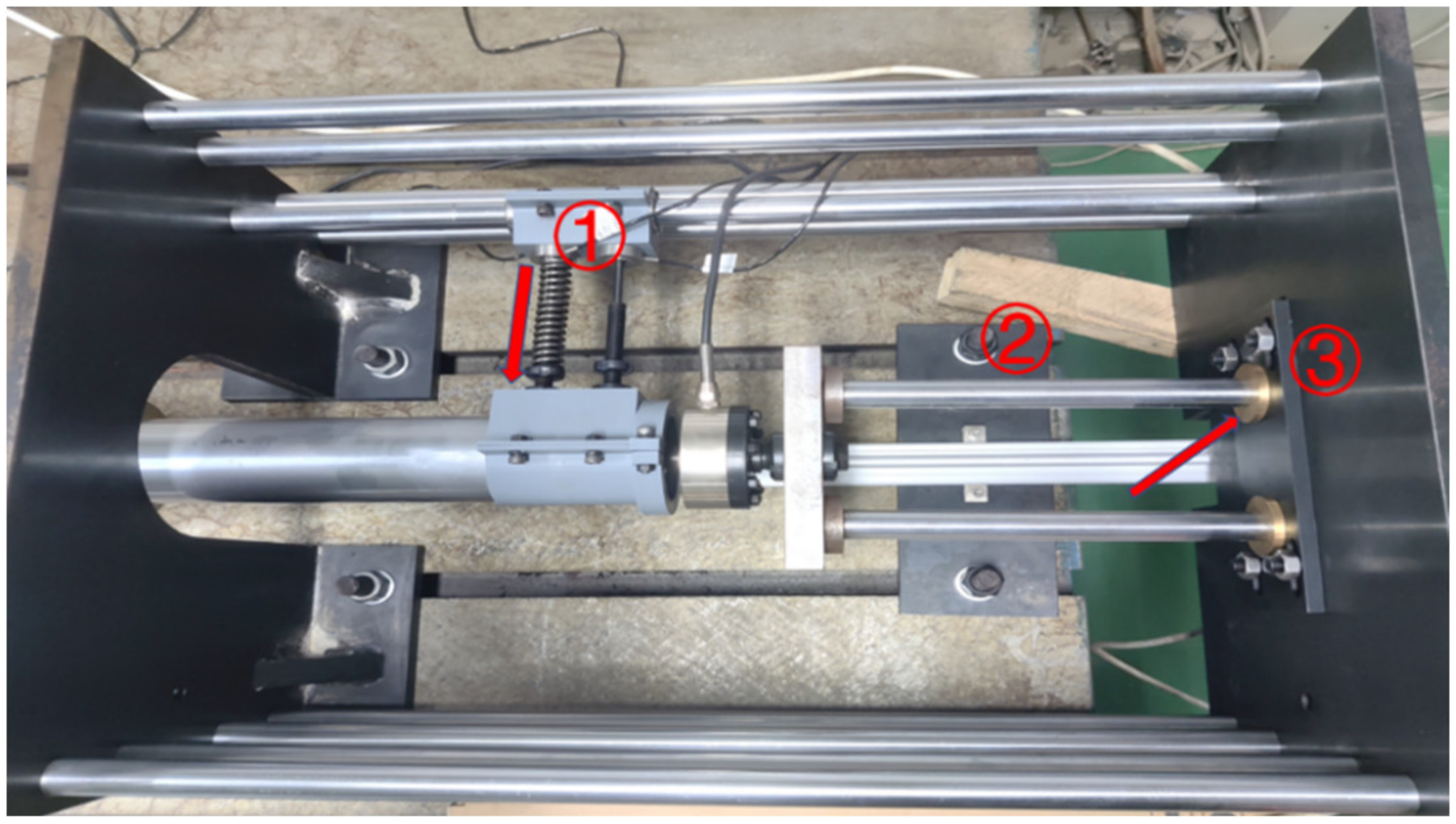
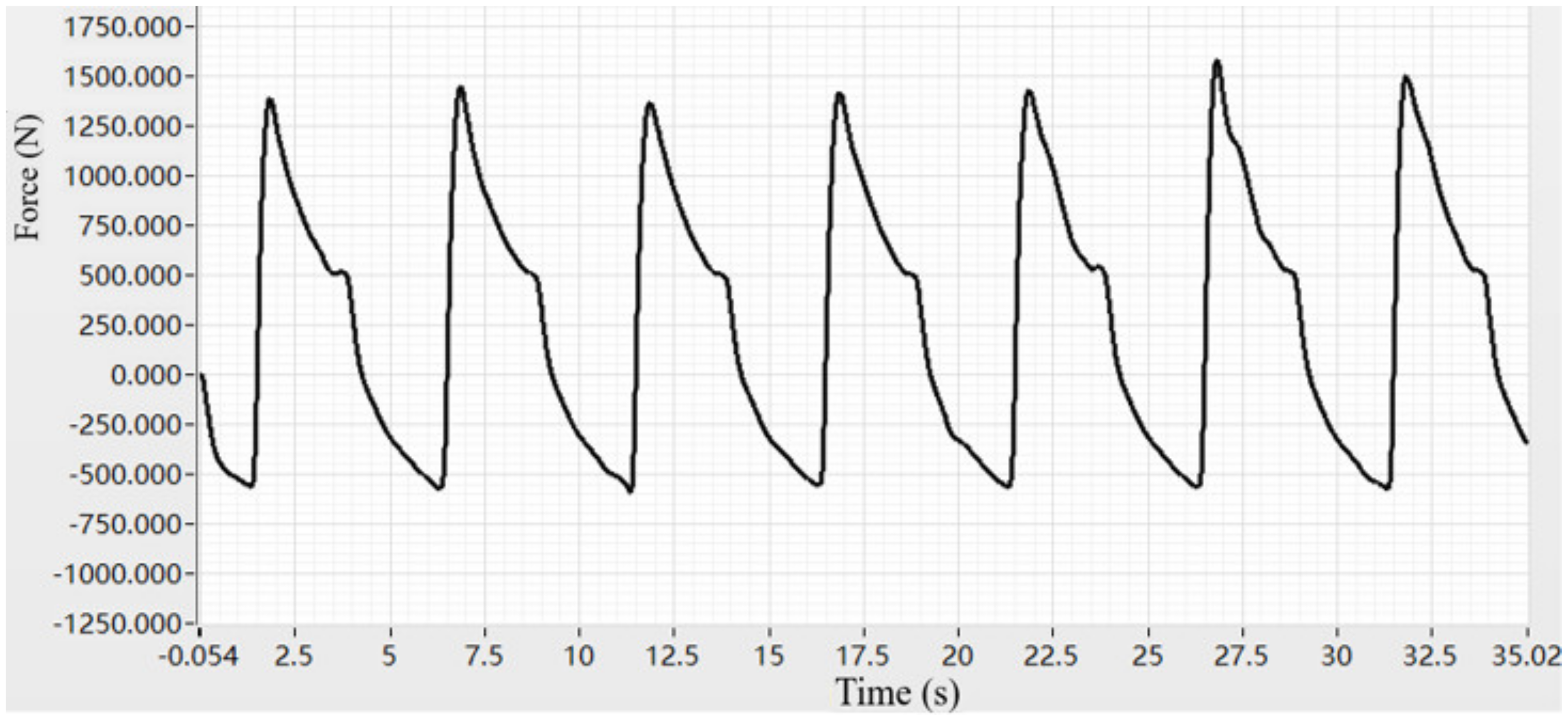



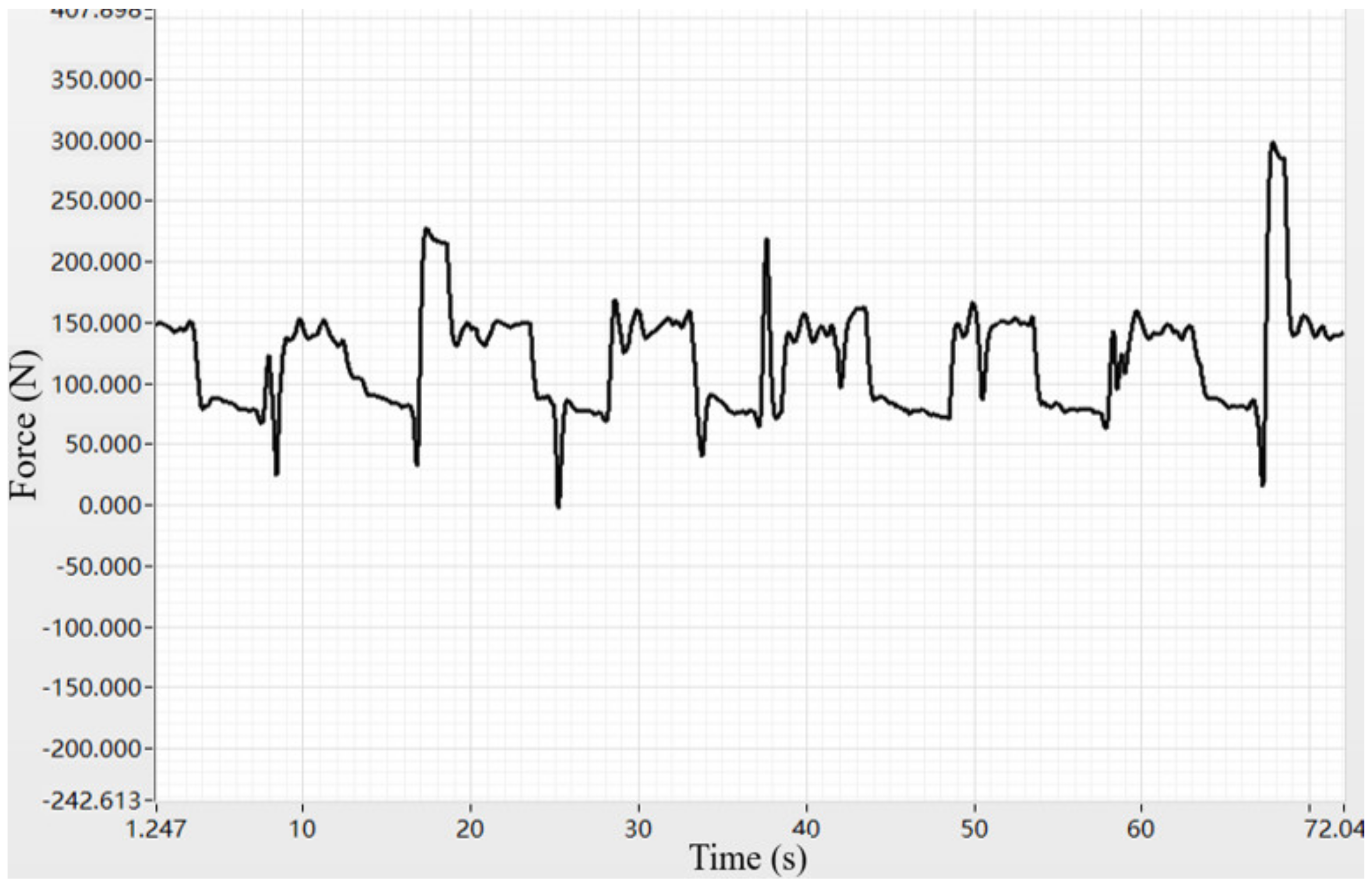

| Parameter | Value |
|---|---|
| DC Bus Voltage | 270 V |
| Rated power | 6 kW |
| Rated torque | 19 Nm |
| Peak torque (Low speed) | 50 Nm |
| Rated speed | 3000 rpm |
| Maximum speed | 3500 rpm |
| Rated current (I) | 27 A |
| Algorithm | Adjustment Time (s) | Time of Displacement Fluctuation (s) |
|---|---|---|
| PID | 6 | 2 |
| ADRC | 4 | 0.2 |
| Algorithm | Lag Time (s) | Attenuation Amplitude |
|---|---|---|
| PID | 0.5 | 2.67% |
| ADRC | 0.4 | 1.33% |
| Algorithm | Displacement Recovery Time (s) | Displacement Fluctuation Amplitude (mm) | Speed Recovery Time (s) | Average Velocity Fluctuation Amplitude (m2/s) |
|---|---|---|---|---|
| PID | 6 | ±70 | 10 | ±120 |
| ADRC | 1.6 | ±12 | 1.6 | ±80 |
Publisher’s Note: MDPI stays neutral with regard to jurisdictional claims in published maps and institutional affiliations. |
© 2022 by the authors. Licensee MDPI, Basel, Switzerland. This article is an open access article distributed under the terms and conditions of the Creative Commons Attribution (CC BY) license (https://creativecommons.org/licenses/by/4.0/).
Share and Cite
Wu, S.; Zhou, Y.; Zhang, J.; Ma, S.; Lian, Y. Research on Stability Control Method of Electro-Mechanical Actuator under the Influence of Lateral Force. Electronics 2022, 11, 1237. https://doi.org/10.3390/electronics11081237
Wu S, Zhou Y, Zhang J, Ma S, Lian Y. Research on Stability Control Method of Electro-Mechanical Actuator under the Influence of Lateral Force. Electronics. 2022; 11(8):1237. https://doi.org/10.3390/electronics11081237
Chicago/Turabian StyleWu, Shuai, Yong Zhou, Jianxin Zhang, Shangjun Ma, and Yunxiao Lian. 2022. "Research on Stability Control Method of Electro-Mechanical Actuator under the Influence of Lateral Force" Electronics 11, no. 8: 1237. https://doi.org/10.3390/electronics11081237
APA StyleWu, S., Zhou, Y., Zhang, J., Ma, S., & Lian, Y. (2022). Research on Stability Control Method of Electro-Mechanical Actuator under the Influence of Lateral Force. Electronics, 11(8), 1237. https://doi.org/10.3390/electronics11081237






